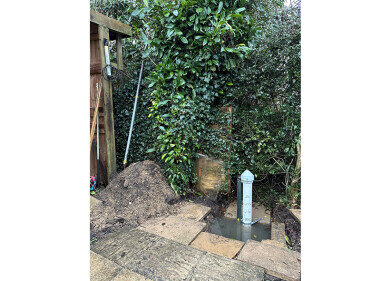Water/Wastewater
Conducting an Aquifer Slug Test
Oct 17 2008
Slug tests require the depression or elevation of static water in a well and the measurement of time it takes to equilibrate. This is accomplished by inserting a slug into a well, causing the water level to rise, or by removing the slug, causing the water level to fall. Time is measured until the water level returns to its original static position.
Measurements are logged at an extremely rapid sampling rate, typically as fast as the instrument will allow.
Alternatively, a logarithmically decaying sampling rate can be used. A valuable reference for all facets of slug testing is The Design, Performance, and Analysis of Slug Tests by J.J. Butler, Jr. (1997).
An aquifer slug test is typically conducted at a single well location. Before performing a slug test, the following field equipment is required: water level instrument with rapid or true logarithmic measurement capabilities, software for analysing data and modeling results, water level tape, personal protective equipment, and a slug. A slug can consist of a solid object that can slide into a well or a known volume of water.
In-Situ® Inc offers one of the most accurate and complete ranges of water level instruments on the market today. The Level TROLL® 700 instrument offers fast linear (4 times/second) and true logarithmic sampling rates for slug testing. Win-Situ® 5 software allows real-time viewing and graphing of the data as it is being logged to the Level TROLL 700 instrument’s memory. Data is available for analysis within Win-Situ 5 software and can be exported to AQTESOLV™ software (AQTESOLV is a trademark of HydroSOLVE, Inc.) for further analysis and to
apply the desired solution (e.g., Bouwer-Rice) to the data.
Please visit www.in-situ.com for details on Level TROLL instruments and to download the technical note titled, Slug Test Using the In-Situ Level TROLL® 500 and Level TROLL 700 Instruments and AQTESOLV Software.
Digital Edition
IET 34.2 March 2024
April 2024
Gas Detection - Biogas batch fermentation system for laboratory use with automatic gas analysis in real time Water/Wastewater - Upcycling sensors for sustainable nature management - Prist...
View all digital editions
Events
May 05 2024 Seville, Spain
May 06 2024 Minneapolis, MN, USA
May 13 2024 Munich, Germany
May 15 2024 Lund, Sweden
May 15 2024 Frankurt-am-Main, Germany


















